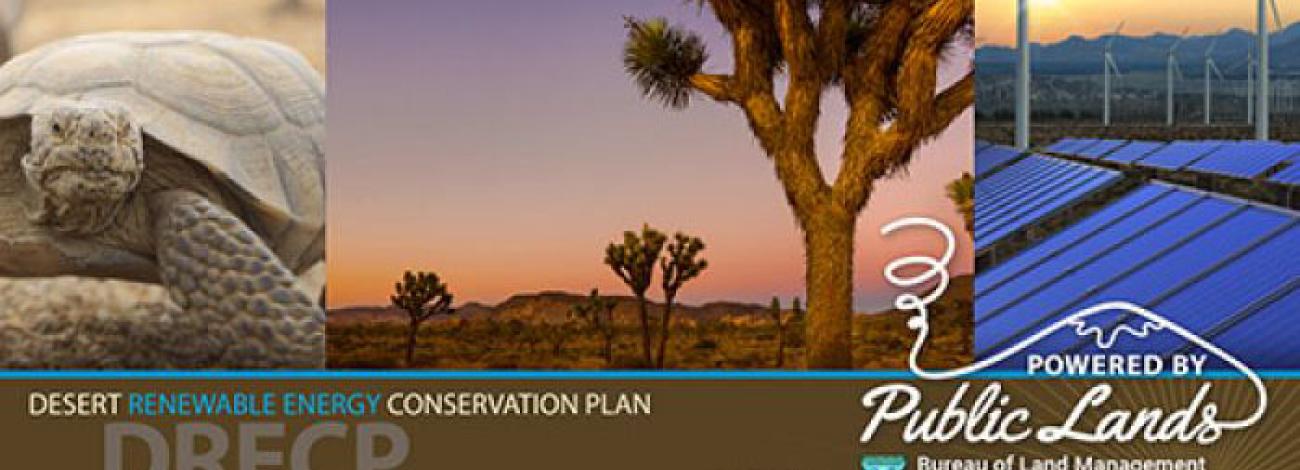
The Desert Renewable Energy Conservation Plan (DRECP) is focused on 10.8 million acres of public lands in the desert regions of seven California counties – Imperial, Inyo, Kern, Los Angeles, Riverside, San Bernardino, and San Diego. It is a landscape-level plan that streamlines renewable energy development while conserving unique and valuable desert ecosystems and providing outdoor recreation opportunities.
The DRECP is a collaborative effort between the California Energy Commission, California Department of Fish and Wildlife, the U.S. Bureau of Land Management, and the U.S. Fish and Wildlife Service, also known as the Renewable Energy Action Team.
The BLM signed the Record of Decision approving its Land Use Plan Amendment on September 14, 2016, completing Phase I of the DRECP.
Durability Agreement
2015 Agreement
2022 Amendment
The Bureau of Land Management (BLM) and California Department of Fish and Wildlife (CDFW) have signed a 2022 amendment to the Durability Agreement and Co-Management Plan, which is a key conservation agreement that provides innovative tools to manage impacts to wildlife and their habitats in California.
The JB Eastern Slope Mitigation Lands is the first state-required mitigation project on BLM-managed public lands in the California Desert Conservation Area. These lands encompass 158,000 acres that will be restored to improve habitat for desert Tortoise, Mohave ground squirrel, burrowing owl and the American badger.
Background
The Bureau of Land Management (BLM) and California Department of Fish and Wildlife (CDFW) are partnering under a key conservation agreement, providing innovative tools to manage impacts to wildlife and their habitats in California.
The agreement, known as the Durability Agreement, recognizes that BLM-managed public lands play an important role in conserving sensitive species and their habitats. The cornerstone to the agreement is the ability for CDFW to utilize BLM-managed public lands for a variety of conservation actions and, under certain circumstances, for project-level mitigation to better meet California state standards.
The Durability Agreement applies to projects that cannot avoid or minimize all impacts to wildlife, which typically are required to compensate for the remaining impacts. The tools outlined in the agreement may be applied in a variety of ways including establishing wildlife connectivity, conserving habitat under future climate conditions and offsetting project impacts.
The BLM and CDFW developed the Durability Agreement while working together on the Desert Renewable Energy Conservation Plan, a landscape-level renewable energy and conservation plan covering 22.5 million acres of land in the California desert. However, the tools and process described in the agreement will enable the agencies to apply the tools and process to public lands statewide.
Both the BLM and CDFW have legal responsibilities to conserve wildlife under the Federal Endangered Species Act and the California Endangered Species Act. When authorizing land use activities, the BLM must ensure the needs of wildlife, fish and plants are taken into consideration. CDFW requires project proponents to avoid, minimize, and/or compensate for impacts to fish, wildlife, plants and their habitats.
